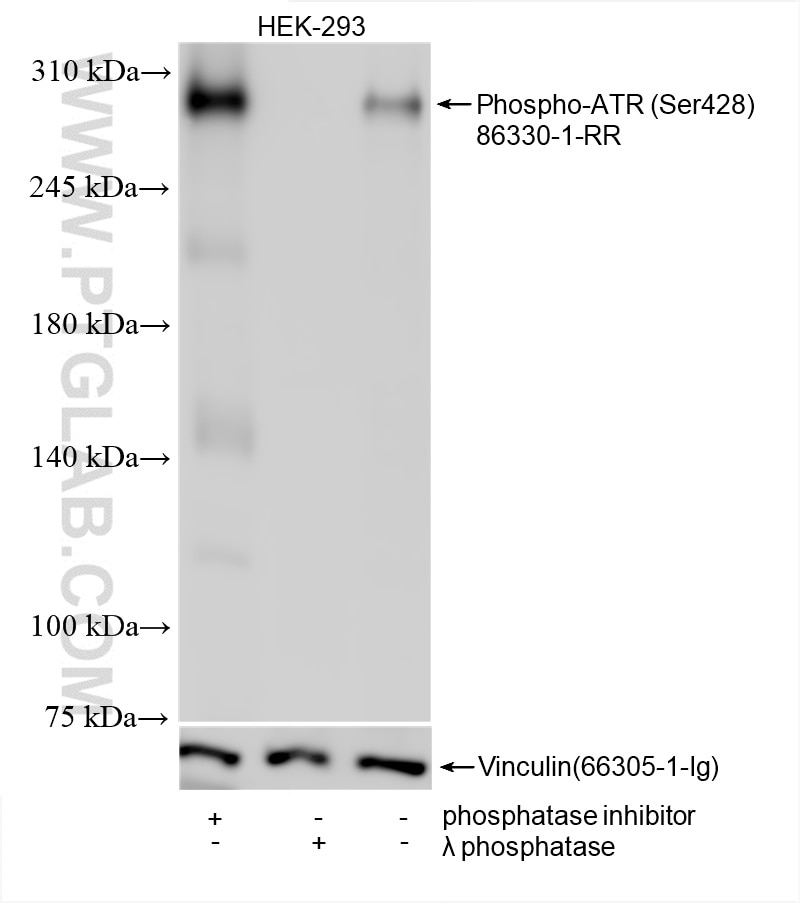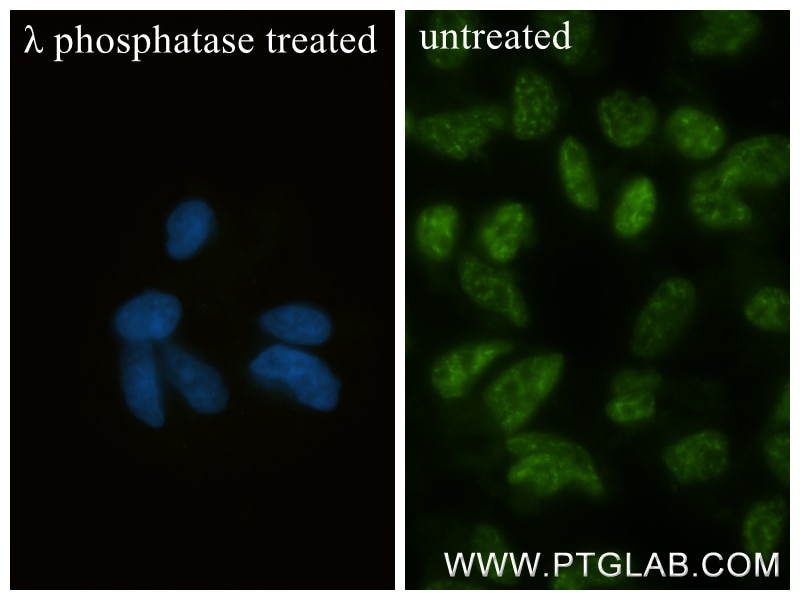Tested Applications
| Positive WB detected in | HEK-293 cells |
| Positive IF/ICC detected in | HEK-293 cells |
Recommended dilution
| Application | Dilution |
|---|---|
| Western Blot (WB) | WB : 1:1000-1:6000 |
| Immunofluorescence (IF)/ICC | IF/ICC : 1:200-1:800 |
| It is recommended that this reagent should be titrated in each testing system to obtain optimal results. | |
| Sample-dependent, Check data in validation data gallery. | |
Product Information
86330-1-RR targets Phospho-ATR (Ser428) in WB, IF/ICC, ELISA applications and shows reactivity with human samples.
| Tested Reactivity | human |
| Host / Isotype | Rabbit / IgG |
| Class | Recombinant |
| Type | Antibody |
| Immunogen |
Peptide Predict reactive species |
| Full Name | ataxia telangiectasia and Rad3 related |
| Calculated Molecular Weight | 301 kDa |
| Observed Molecular Weight | 300 kDa |
| GenBank Accession Number | NM_001184 |
| Gene Symbol | ATR |
| Gene ID (NCBI) | 545 |
| Conjugate | Unconjugated |
| Form | Liquid |
| Purification Method | Protein A purification |
| UNIPROT ID | Q13535 |
| Storage Buffer | PBS with 0.02% sodium azide and 50% glycerol, pH 7.3. |
| Storage Conditions | Store at -20°C. Stable for one year after shipment. Aliquoting is unnecessary for -20oC storage. 20ul sizes contain 0.1% BSA. |
Background Information
Ataxia-telangiectasia and Rad3 related (ATR) is a serine/threonine kinase and a member of the phosphatidylinositol 3-kinase-related kinase (PIKK) family, particularly the ataxia telangiectasia mutated (ATM) subfamily. The phosphorylation site of ATR is located at Ser428 and is crucial for proper ATR function. In a series of breast cancer studies, high ATR expression and activation were significantly associated with higher tumor stage, mitotic index, pleomorphism, lymphovascular invasion, and poor survival. (PMID: 33854565)






